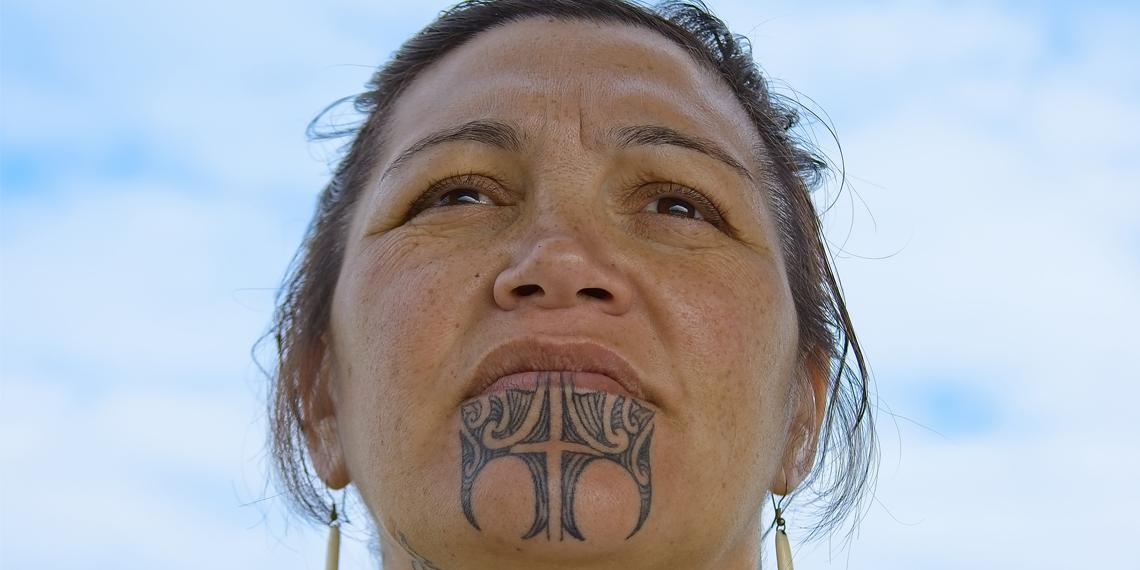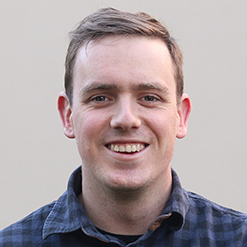Remembering Parihaka

There is a growing movement to commemorate Parihaka Day on 5 November—the day in 1881 that a peaceful Māori village was ransacked by 1600 troops. Is this part of our history best left in the past, or is it still shaping our nation?
When you think of 5 November, it’s likely you have warm memories of lighting fireworks on the back lawn. Guy Fawkes has always been a great excuse to get together with friends and family in the name of a few colourful explosives. But for the tangata whenua of our land, 5 November runs a little darker.
On that day in 1881, 1600 troops invaded the community of Parihaka, a Māori village which had come to symbolise the peaceful resistance to the European confiscation of Māori land. But what relevance does this have for us 137 years later? Its brutal colonial characteristics means Parihaka can be a challenging part of our history to engage with. Yet, when we dig a little deeper, we find its core themes can play an imperative role in building a nation of love and grace.
The power of peaceful resistance
In 1863, the New Zealand Parliament introduced the New Zealand Settlements Act, a law which gave the government power to confiscate Māori land. This was about punishing Iwi who were said to have rebelled against the authority of Queen Victoria. Subsequently, around three million acres of Māori land across the North Island was taken and seized by the British. Around the same time, the government also introduced the Suppression of Rebellion Act; this meant any Māori that fought against British forces could be arrested and detained indefinitely without trial.
Founded in 1866, Parihaka was established on government-seized land by chiefs Te Whiti o Rongomai and Tohu Kākahi. Located directly to the west of Mount Taranaki, it attracted Māori who had been driven off their land as a result of the ongoing confiscations. The village gradually grew to over 2000 and impressed many Europeans with its crops and self- sufficiency.
As the Taranaki region grew with European settlers, so, too, did demand for farmland. While some Māori accepted government payments for their land, others in the region rejected them—the government began making plans to seize their land anyway and, by 1878, began preparing for its sale. As compensation for these confiscations, the Europeans promised Māori they would be allowed to occupy specific reserves. They also promised that significant burial, cultivation and fishing grounds would be left alone.
However, it quickly became clear the settlers would not be keeping their promises. So, in an expression of non-violent protest, Te Whiti, Tohu and a number of followers began ploughing settlers’ farmland and placing fences across roadways. By the end of May 1879, protestors had ploughed settler land across the Taranaki region. As a result, more than 400 of Te Whiti and Tohu’s followers were arrested without trial.
The fascinating thing about Te Whiti and Tohu was that they believed in peaceful, non-violent resistance; much in the vein of Matthew 5:38–40. The two leaders were, in fact, deeply religious people who drew their ethics about peace from the Bible.
Senior lecturer of Religious Studies at Victoria University of Wellington, Geoff Troughton, says a peace ethic of non-violence and forgiveness was a core feature of the teachings circulating within Māori Christian communities at the time and also at Parihaka. ‘Often we hear about Parihaka and Te Whiti’s movement as an independent Māori prophetic movement,
apparently espousing quite novel ideas. There is something to this, but it was also informed thoroughly by biblical Christian teaching,’ Geoff says. ‘It comes through a creative integration of Māori sensibility, Māori peace-making priorities and a Christian ethic about non-violence and non-retaliation.’
Geoff talks of John Ward, a government-appointed interpreter who spent time with Te Whiti and Tohu [when they were taken to the South Island] and wrote of his impressions. Ward attempted to get the Māori leaders to read Western literature—such as Robinson Crusoe—however, they only wanted to read the Bible. ‘Ward thinks these guys are religious nutters, he calls them religious maniacs because they take the Bible so seriously.’
Invasion day
As Pākehā grew increasingly concerned about ongoing Māoriresistance, the government decided it was time to take action. It was then, on 5 November, that 1600 volunteer and Armed Constabulary troops descended upon Parihaka. Native Minister John Bryce ordered the arrest of its leaders and the destruction of its village. Yet the community refused to show signs of violent resistance—they even sent children out to greet the government troops with food and songs.
Te Whiti and Tohu were arrested and charged with ‘wickedly, maliciously, and seditiously contriving and intending to disturb the peace’. Parihaka was placed under strict military
supervision, with 70 soldiers and five officers based at the village. The people of this once thriving community were left demoralised and landless.
To prevent further Māori resistance, the government introduced The Indemnity Act of 1882—intended to give legal protection to the politicians and soldiers involved. The introduction of The West Coast Preservation Act also meant it became illegal for a group of 50 or more Māori to gather in one place. Naturally this was devastating for Māori, who are deeply
embedded in community.
Te Whiti and Tohu were jailed without a fair trial. After two years, they were sent back to Parihaka. The crown kept around 5000 acres of reserves—land that was originally promised to Māori—as ‘compensation’ for the ‘cost’ of military activities.
What does Parihaka have to do with us?
It can be tempting to see Parihaka as an event best forgotten. After all, those directly affected are long gone. But peaceful resistance stories such as Parihaka remind us there are other ways to live out and narrate New Zealand’s story, says Geoff.
‘We’re happy to remember World War I and the impact that has had on New Zealand history and culture. But we have to be real about violence closer to home from an earlier period—
violence that was met with great patience and forbearance,’ reflects Geoff.
‘Many of our stories of nationhood and what it means tobe a New Zealander, are forged in conflict. We like to think of ourselves as a peaceful nation. But why don’t we tell peace stories more? Why don’t we have more of a story of our nationhood that’s grounded in actual peace-making? ‘It doesn’t have to be all about Gallipoli or about sacrifice in battle. It can be about stories of people struggling to overcome injustice and other problems, but giving up their right to vengeance, self-assertion and the temptation to dominate others out of a preference for love and for non-violence.’
Salvation Army Māori Ministry leader Lieutenant Tau Mataki says recognising the atrocities of Parihaka, and others like it, can play a significant part in the continuing restoration of Aotearoa. ‘You’re actually seeing Māori want to talk about restoration, as opposed to saying “give me back what you took”.’
He says while the vast land confiscations are not easy stories for Pākehā to tell, it’s vital to recognise our past if we want move forward. ‘I am seeing through the examples of Parihaka the need for us to actually acknowledge those wrongs from non-Māori,’ adds Tau. ‘In Parihaka, they stood there as a faith community, they knew it didn’t matter what happened, they were covered by the blood of the lamb.’
An overdue apology
On 10 June 2017, then-Minister for Treaty of Waitangi Negotiations Chris Finlayson publicly apologised to the people of Parihaka at a historic reconciliation ceremony. ‘The Crown profoundly regrets these actions, which have burdened the people of Parihaka with an intergenerational legacy of grievance and deprivation, and which have burdened the Crown with a legacy of shame,’ Finlayson said.
‘For the vision of Tohu Kākahi and Te Whiti o Rongomai was not one of protest and resistance. Theirs was a vision of self-determination, co-operation and peace. ‘In the past, the Crown felt threatened by that vision and sought to undermine it. Today the Crown comes to Parihaka to make a contribution to the fulfilment of that vision.’
Part of this reconciliation process included a nine million dollar development fund from the government. Yet Chair of the Parihaka Papakainga Trust asserted that reconciliation
was about more than just money and legislation—it was about the reconciliation of spirit. ‘That is the priority, healing and reconciliation of intergenerational trauma which still exists
today,’ she told Stuff. ‘This event will not settle it or take it away, it is not an end, it is only a beginning’.
‘For a long time, it was about Parihaka being able to maintain its own integrity and autonomy, and now, with this reconciliation process, our rangatahi feel like we have that relationship,’ added Parihaka resident Te Akau Wharehoka.
Geoff says New Zealanders can’t avoid the fact that colonial atrocities such as Parihaka helped make modern New Zealand what it is. ‘It’s important to listen carefully to those most affected by such actions if we are to understand the longerterm effects and how we might address them.’
Yet he says the Parihaka story is challenging as its pacifist nature doesn’t always fit comfortably with the human condition: ‘We love the heroism and the beauty of the Parihaka story, but it’s a challenging story. Non-violence is really, really challenging. It can be very costly and painful.
‘We do need to be honest with ourselves about the extent of violence in New Zealand’s cultures and communities. If we pay careful attention, we find that violent logic runs pretty deep in
our attitudes and social structures,’ reflects Geoff. ‘If we want to overcome this, we need to think carefully about the things we value, honour and celebrate, and the stories we tell ourselves. We also need to cultivate communities that practise what they preach about peace. ‘I’d love to see more accounts of these sorts of actions and these parts of New Zealand stories being elevated and put in front of people and promoted and encouraged.
’It’s a shame the story of Parihaka isn’t shared in the same way we talk of soldiers who perished on the hills of Gallipoli. While it’s not easy to look back and acknowledge these atrocities, they can help us shape where we’re headed. There’s no doubt the love and non-violence shown by Te Whiti and Tohu can not only have a huge impact on the ethics of our nation, but on how we approach relationships in our own lives.
By Hugh Collins (c) 'War Cry' magazine, 3 November 2018, p6-9 - You can read 'War Cry' at your nearest Salvation Army church or centre, or subscribe through Salvationist Resources.

